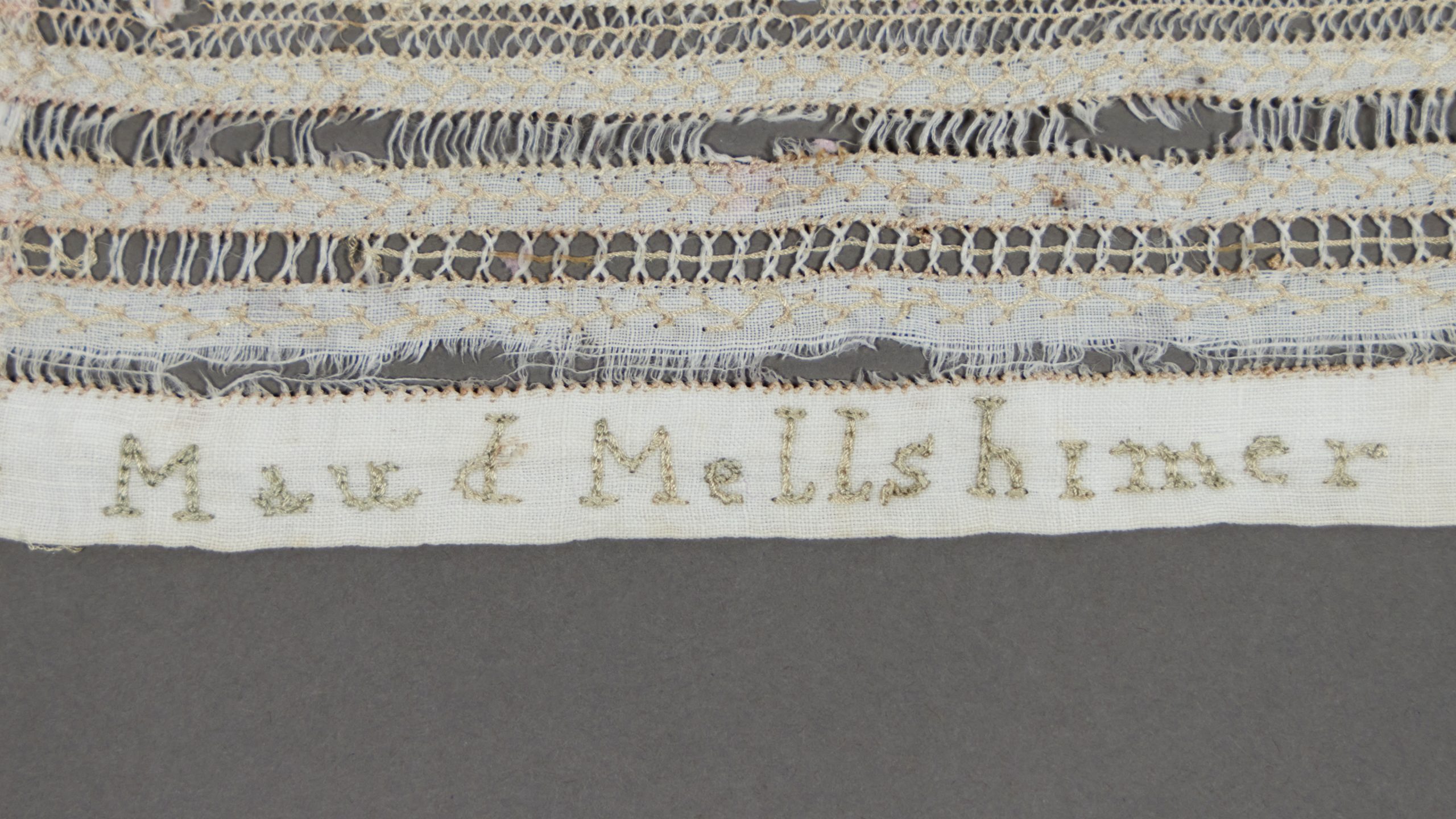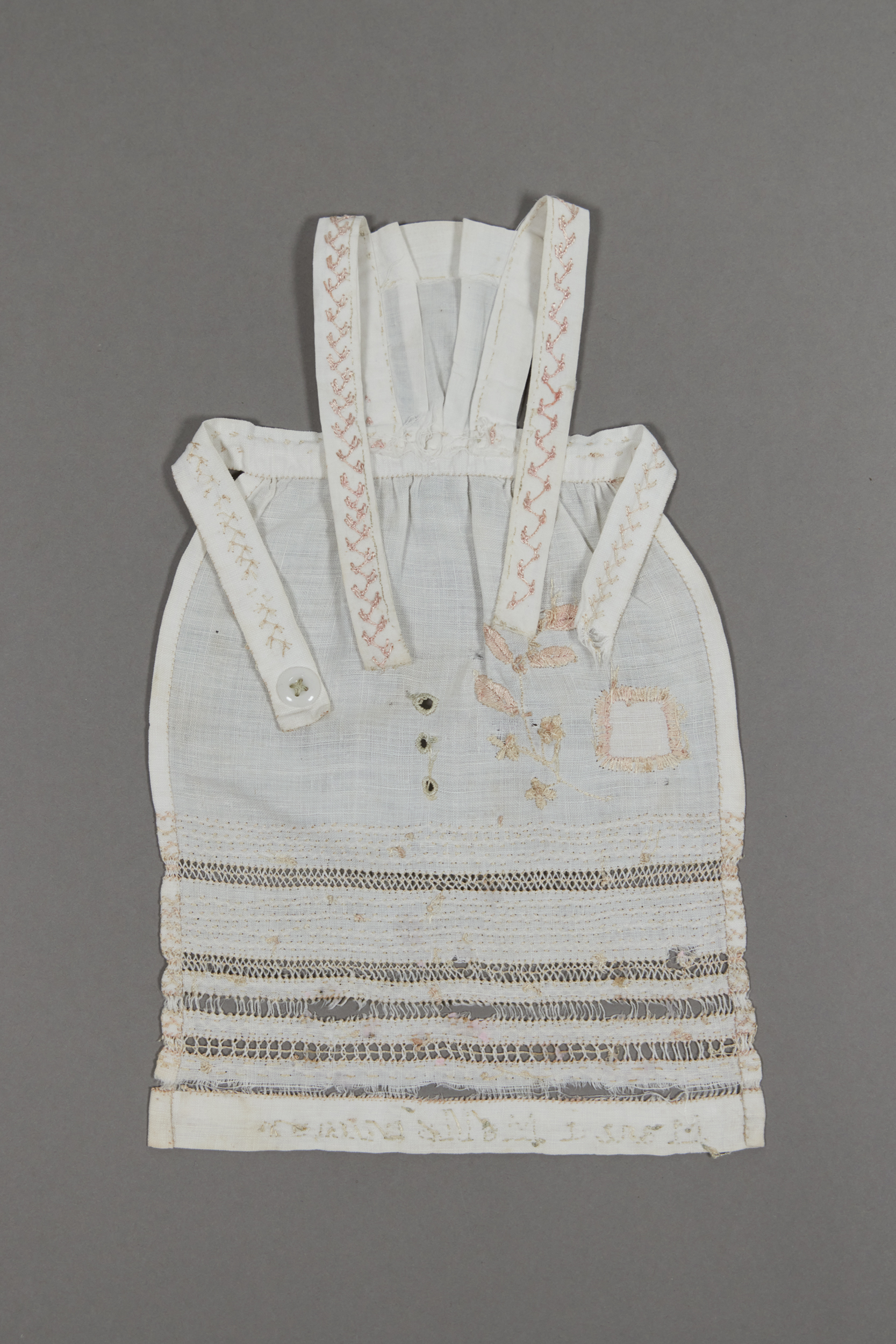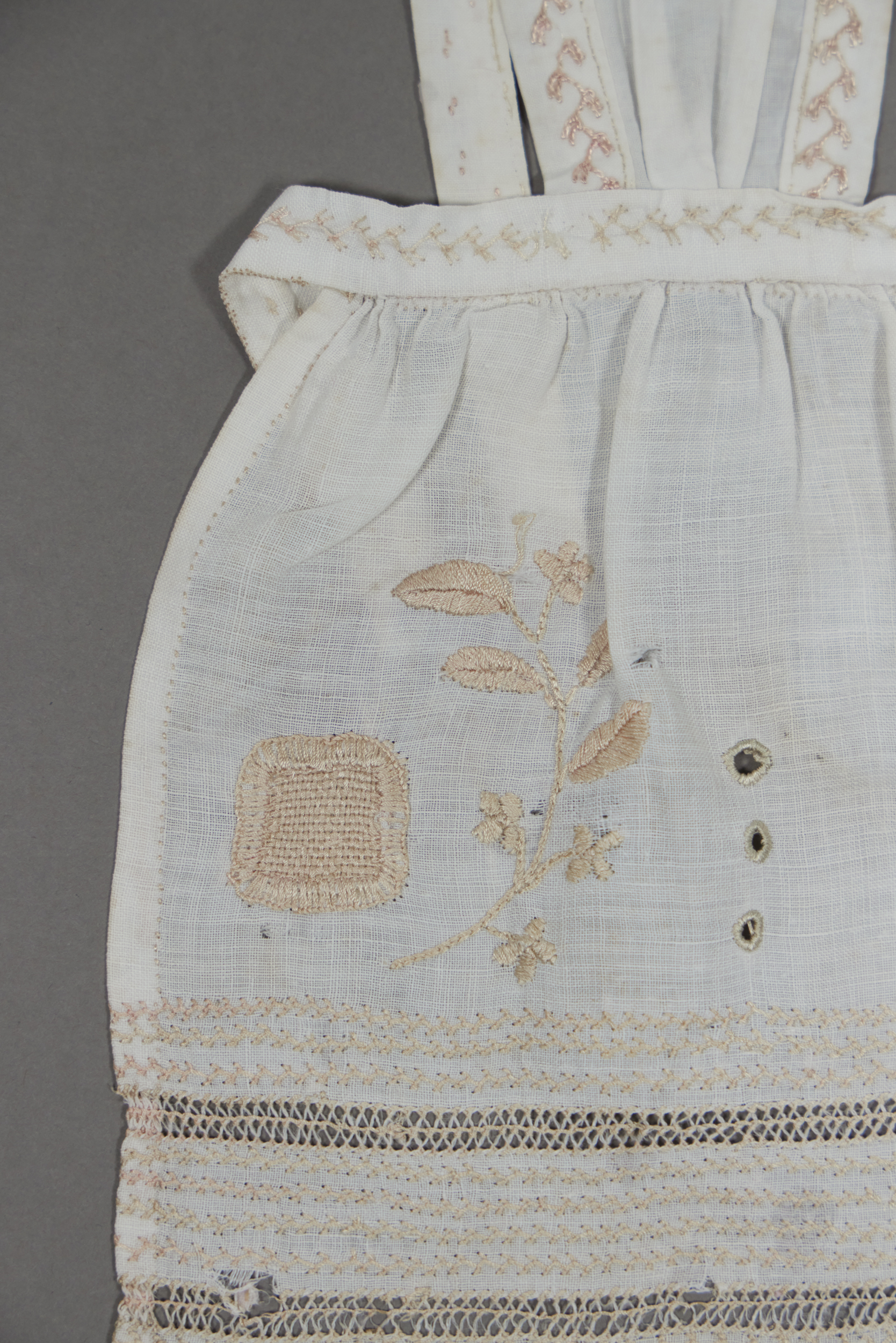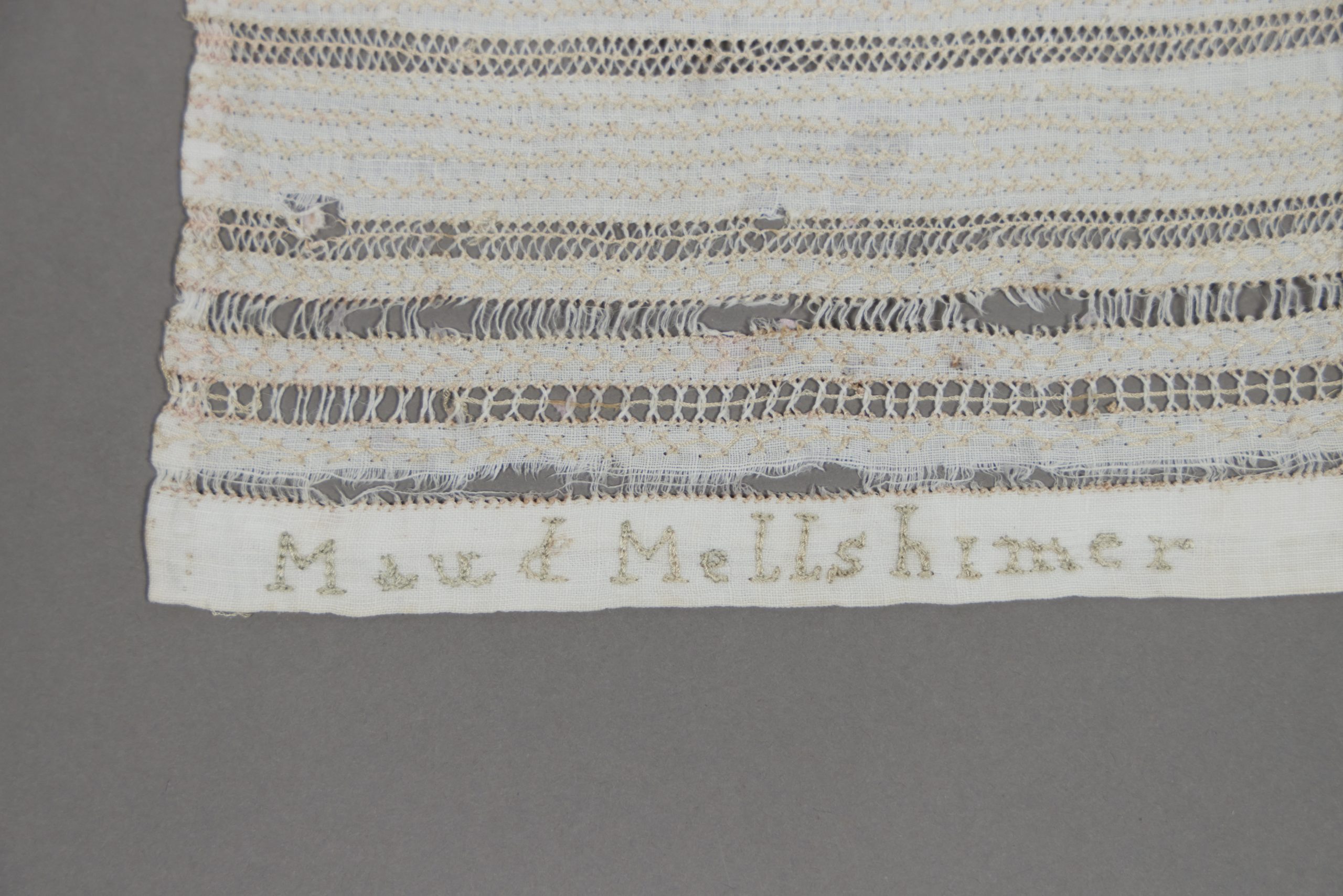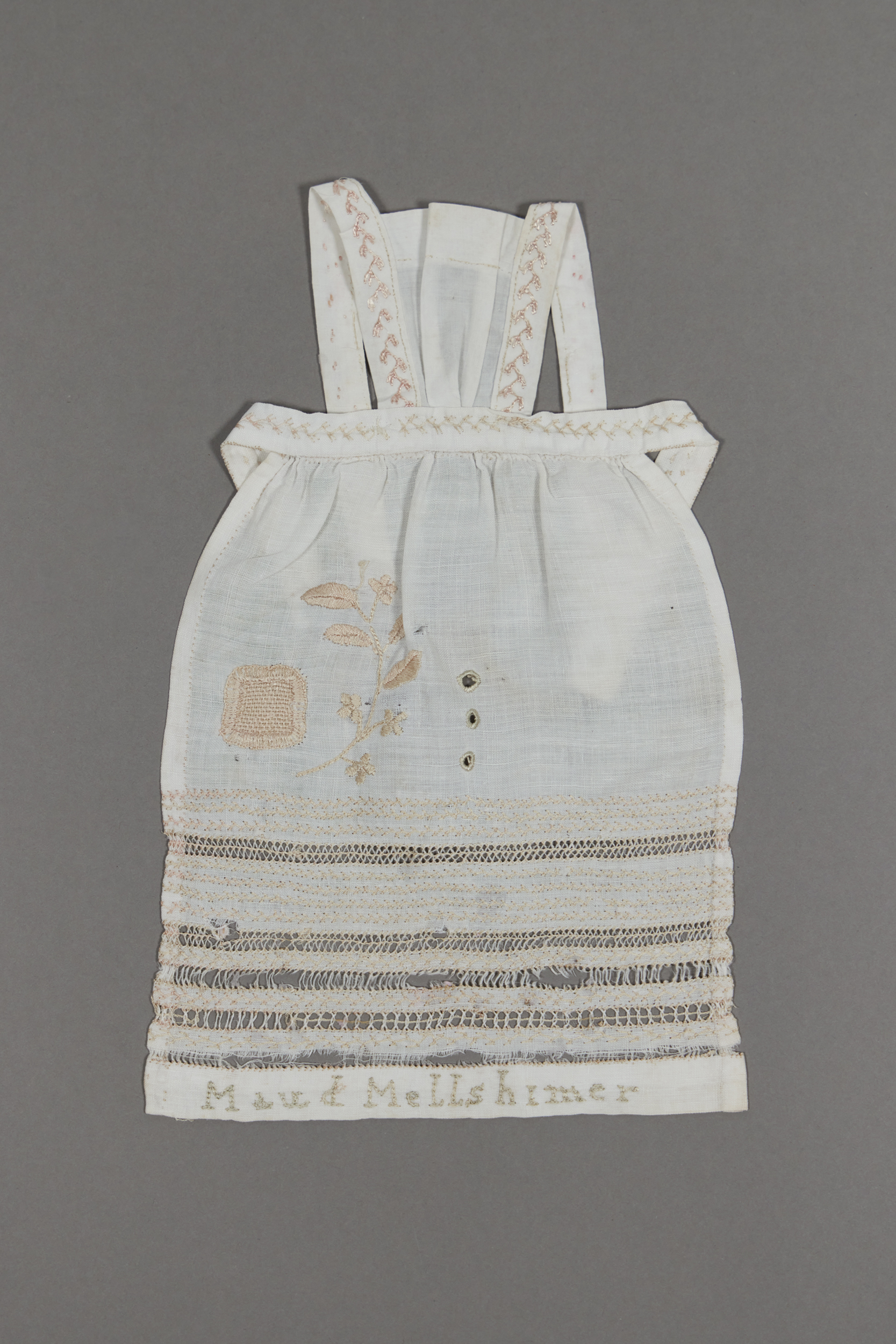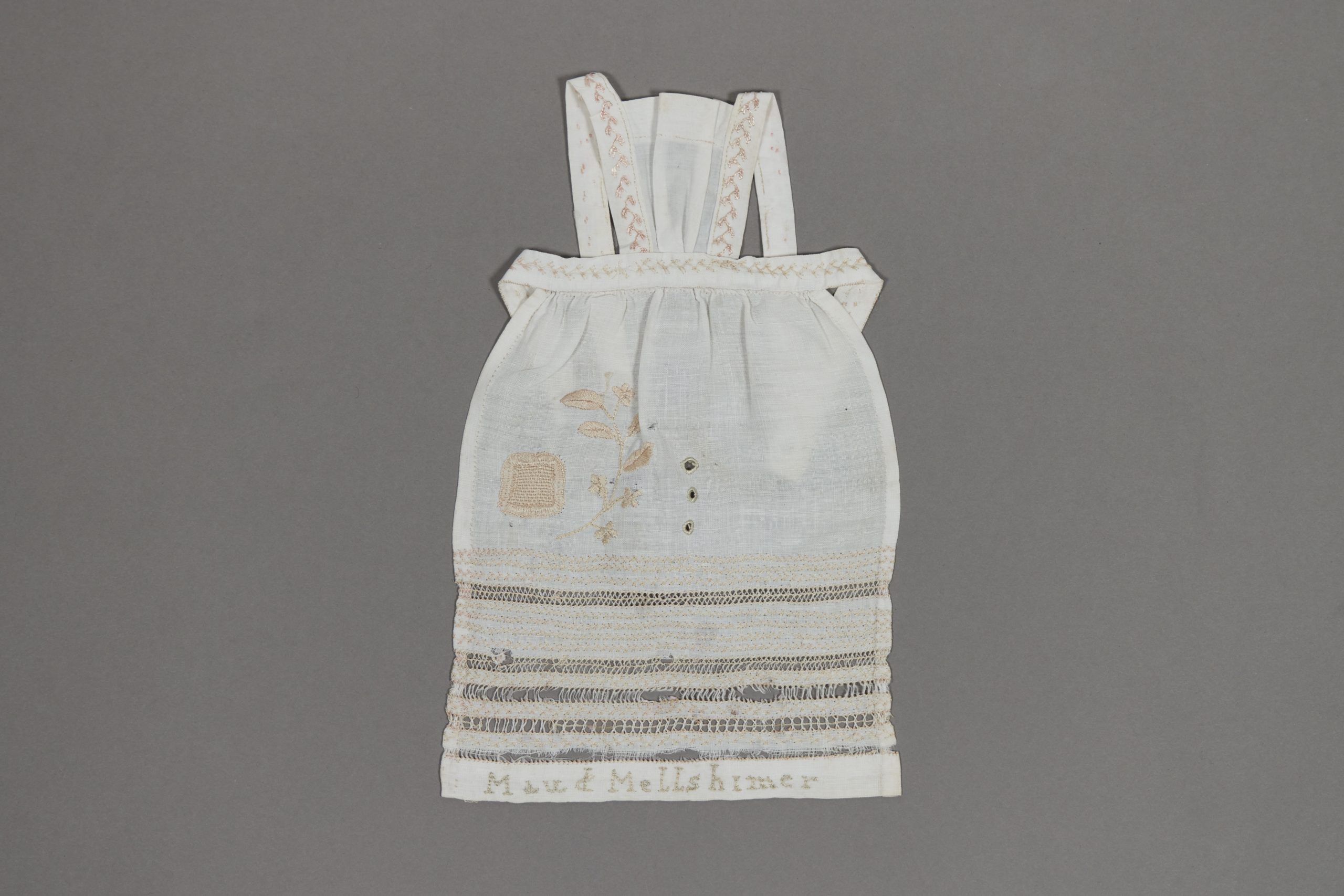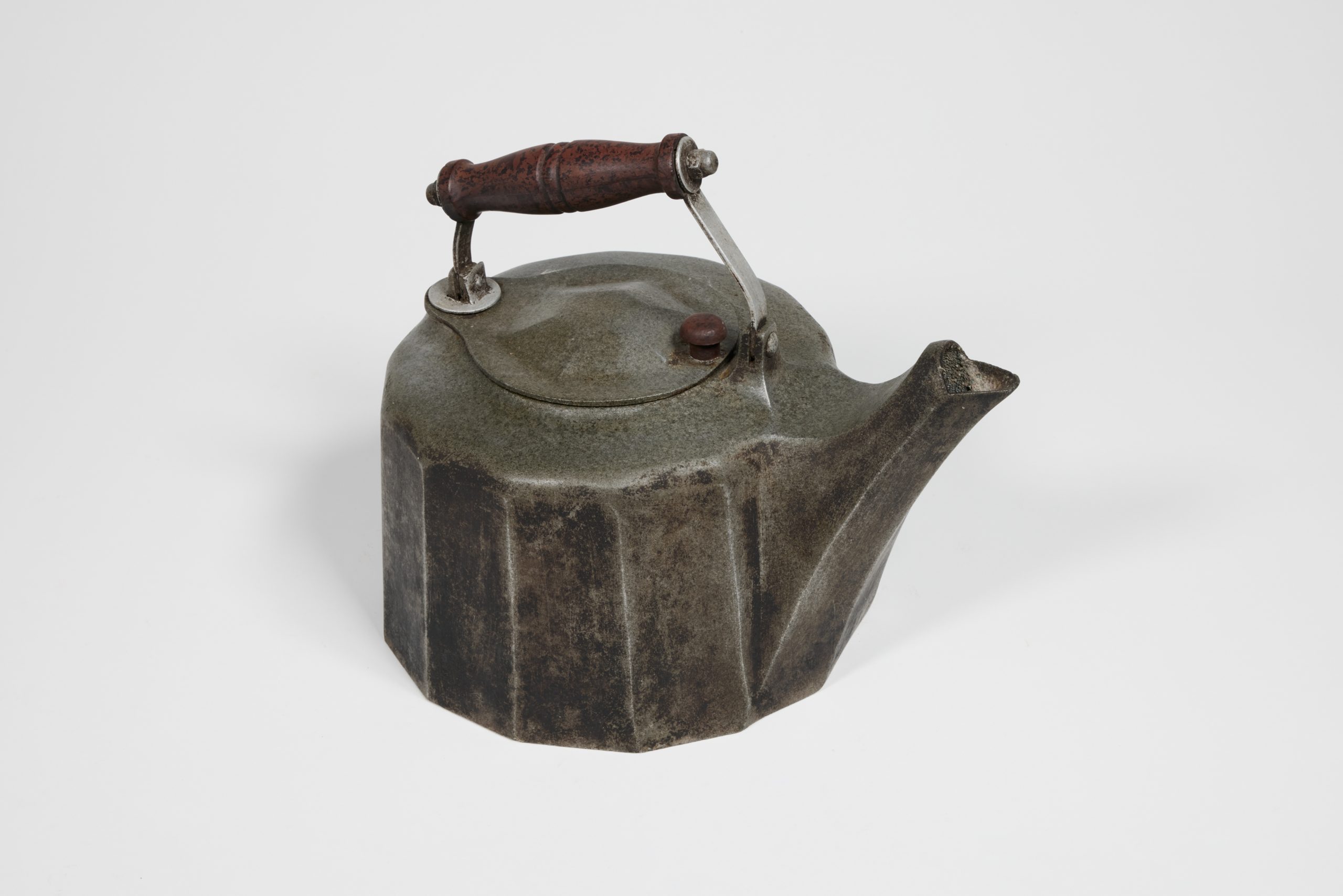Past Ties
Unpicking the Story of Maud’s Childhood Apron
This carefully worked child’s apron was made by the small adept hands of Ada Maud Mellshimer (1888-1970). Ada, who preferred to be called Maud, was the youngest of two girls born to Mary (née Crisp) and George Mellishmer from Ulladulla, on the NSW South Coast.
Maude worked the apron when a student at Ulladulla Public School in c. 1905, a time when handiwork was formally taught to girls in preparation for the expected vocations of wife and mother. According to the Anglo tradition from which the Mellshimer girls descended, this was as nature intended.
The different type of stitches and other embroidery work used on the apron suggest it was created as a ‘sampler’ piece. Making a sampler usually entailed the application of various stitches or ‘fancywork’ features onto cloth – and in this instance an apron – to practice these skills.
Maud’s apron illustrates several embroidery techniques popularly used at the time. Her sister, Ella, made a similar apron sampler, using the same pattern and stitches.
To trim or decorate the apron’s waistband, bib and skirt, Maud used featherstitch. Drawn thread techniques also decorate the skirt and border the hem.
The stemmed daisy-like flower is worked in long stitch, alongside a patch of needle weaving that is bordered in blanket stitch. A simple example of broderie anglaise – a form of ‘cut work’ – was also practiced. And it was common for girls to mark their sampler with their name – as Maud did along the bottom of her apron using chain stitch.
Despite the intention behind teaching girls to sew from school-age, Maud, along with her sister, did not marry or become mothers. Both women lived long independent lives and their independence did not dim their desire to sew.


